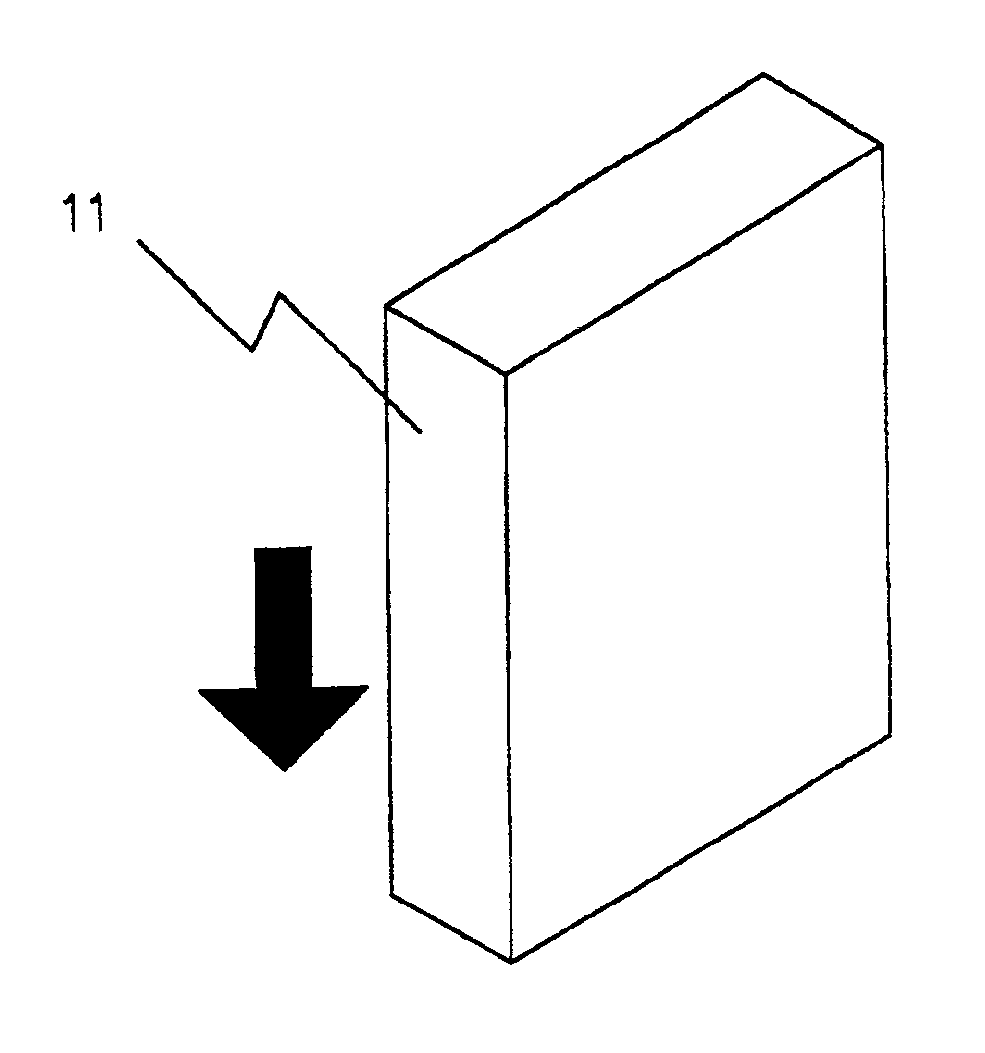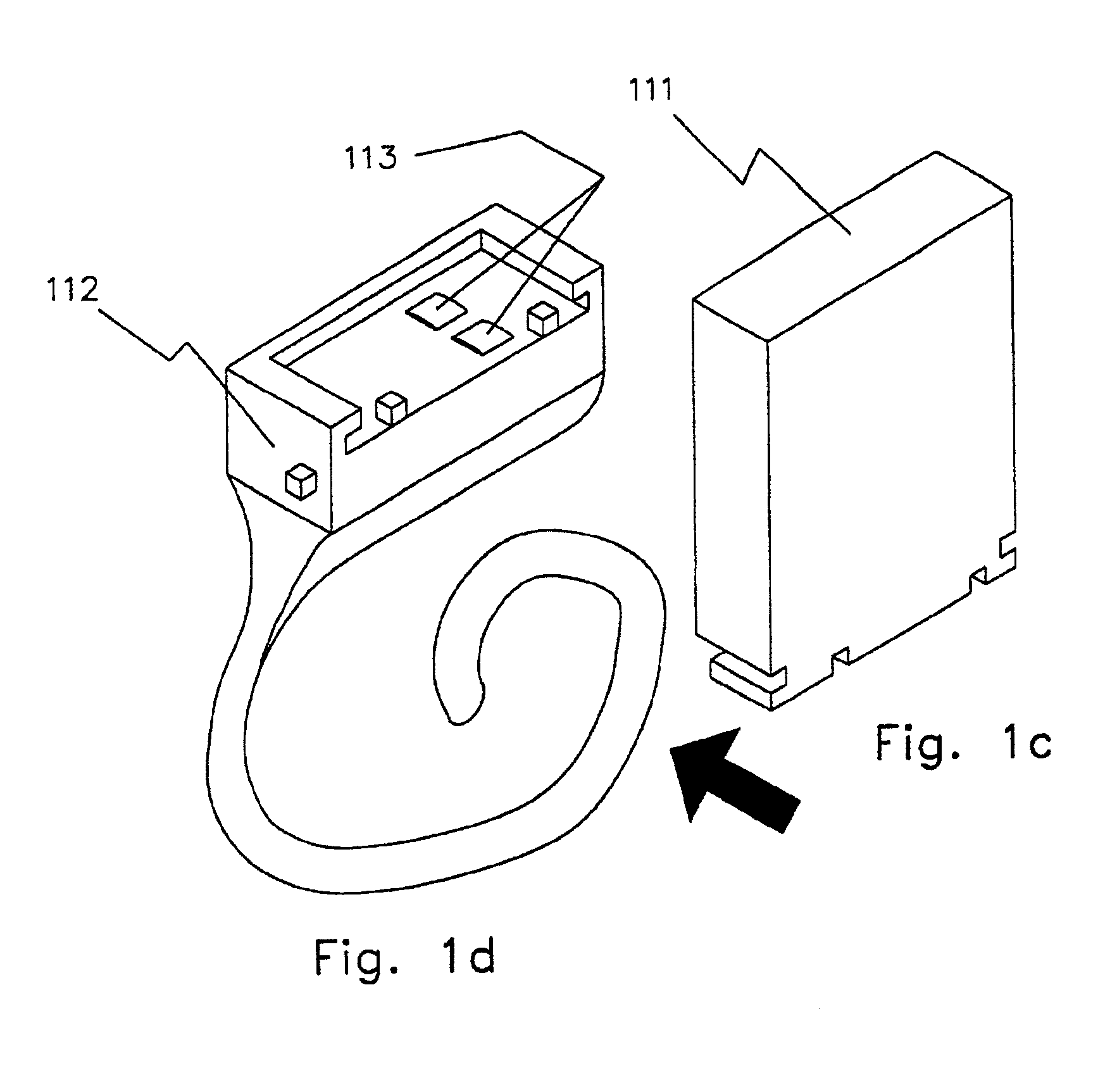Zinc air battery and its uses
a zinc air battery and battery technology, applied in the field of zinc air batteries, can solve the problems of high energy consumption and achieve the effect of small size and low cos
- Summary
- Abstract
- Description
- Claims
- Application Information
AI Technical Summary
Benefits of technology
Problems solved by technology
Method used
Image
Examples
Embodiment Construction
The following description is of the best mode presently contemplated for carrying out the invention. This description is not to be taken in a limiting sense, but is merely made for the purpose of describing the general principles of the invention. The scope of the invention should be determined with reference to the claims.
As in FIG. 1a, the zinc-air battery (11) may be slid into a battery receptacle (13), for example, as in FIG. 1b, of a behind-the-ear unit of a cochlear implant system (12). As shown in FIG. 1c, in another embodiment, the zinc-air battery (111) slides into the battery holder of the BTE (112) part of the cochlear implant system, as in FIG. 1d. The electrical contacts (113) of the BTE (112) unit mate by simple spring pressure to the corresponding contact points on the zinc-air battery (111), which are not shown. A third embodiment is shown in FIG. 1e, with the zinc-air battery (1111) slidingly mating with the BTE battery holding case (1114) as shown in FIG. 1f. The b...
PUM
| Property | Measurement | Unit |
|---|---|---|
| Length | aaaaa | aaaaa |
| Length | aaaaa | aaaaa |
| Length | aaaaa | aaaaa |
Abstract
Description
Claims
Application Information
 Login to View More
Login to View More - R&D
- Intellectual Property
- Life Sciences
- Materials
- Tech Scout
- Unparalleled Data Quality
- Higher Quality Content
- 60% Fewer Hallucinations
Browse by: Latest US Patents, China's latest patents, Technical Efficacy Thesaurus, Application Domain, Technology Topic, Popular Technical Reports.
© 2025 PatSnap. All rights reserved.Legal|Privacy policy|Modern Slavery Act Transparency Statement|Sitemap|About US| Contact US: help@patsnap.com



